Equinox establishes new SUV standard at Chevrolet
By John Gilbert
Interesting times, in the SUV universe known as General Motors, and more specifically Chevrolet. While other GM brands always have tried to specialize — Cadillac with all-out luxury, Buick with “near-luxury,” etc. — the strategy at Chevy has been to try to build all manner of vehicle for all customers.
Chevy’s Suburban started the whole SUV thing, back in the 1930s, and it not only still exists but is thriving as the giant of the segment. Slightly reduced in size is the Tahoe, which has grown to be so big that if you didn’t know the Suburban was still out there, you’d think the Tahoe was the industry giant.
Scaling down from there, we have the more midsize Traverse, then the still more compact Equinox, and finally the (subcompact?) Trax. As a dedicated small-as-you-can-stand advocate, I like the Trax, although I have always found the Equinox to be a pleasant compromise, being built on an automobile platform and gaining much more economy and efficiency than its larger siblings, but somehow managing to provide plenty of interior room, and good fuel economy — particularly when measured against the large-and-getting-larger Suburban.
The Traverse also works, although it’s just enough larger that it seems to require the optional V6 over the 4-cylinder engine. The Equinox seems to get along just fine with the 4.
For 2018, Chevrolet has taken a bold step and completely redesigned the Equinox — making it still more compact. The Equinox is now 4.7 inches shorter and its wheelbase is 5.2 inches shorter, which is quite a lot, and reduces the difference between the Trax and Equinox, while increasing the margin between Equinox and Traverse. The test Equinox 183.1 inches long, with a wheelbase of 107.3. It’s 65.3 inches tall and 72.6 wide.
Such a size reduction is indeed bold when you consider that the Equinox is Chevrolet’s second-largest-selling vehicle, trailing only the Silverado pickup!
I got a chance to spend a week with the new Equinox, and much as I liked its predecessor, the new one is a prize. Possibly the best SUV Chevrolet has ever produced, unless you need to frequently tow a large trailer and need Suburban-Tahoe power. If you don’t, and find the Equinox roomy enough, you only have to see its knockout looks, which is part of the competition Chevy seemed to have abandoned to the Japanese, Koreans and Germans. But this one will challenge the best of them.
It now is called a “signature” grille, because the Trax, Equinox and Traverse all wear similar-looking front ends. But my opinion, the proportions seem to work best on the Equinox. Walk around the Equinox and you find the same pleasing contours and tasteful blending of the rear pillar and the side bulges.
But here’s the intriguing part of the new Equinox, strategically. I was quite surprised when GM decided to sell Opel and Vauxhall, its two European vehicle brands. Particularly Opel had done great things for GM, virtually saving Buick when it allowed that brand to rebadge the Opel Vectra and call it the Regal. It seemed to me that Opel had contributed a lot to GM’s resume.
Well, the new Equinox is built at Ingersoll, Ontario, on an entirely new platform — designed and engineered by Opel. That may be the final joint venture of the two, and if so, the platform feels very tight and precise in driving the Equinox.
There had been one concern. GM’s engine array has managed to mingle the good with the mediocre, and sometimes there was some difficulty placing the best engine in the best housing, in my opinion. First reports were that the new Equinox was underpowered, but when I checked, that was in the model powered by the 1.5-liter turbocharged 4 which couldn’t produce more than 170 horsepower and 203 foot-pounds of torque, direct injection and all.
My test vehicle, which came in a brilliant orange/gold exterior, had pure gold under the hood with the late-arriving 2.0 turbo 4, which had 252 horsepower at 5,500 RPMs, and 260 foot-pounds of torque holding that peak from 2,500 to 4,500 RPMs. Isn’t technology grand? Directing the power through a 9-speed automatic is a good way to handle the power, although it also raised the only shortcoming I found in my test vehicle was a big one: The Equinox had front-wheel drive. All-wheel drive is available for only a moderate price hit, and in many parts of the country FWD might be easily sufficient. But up here in Duluth, Minnesota, where the Great White North made an early, pre-Halloween strike this fall and may bless us with hard, crusty snow until April after such a bold start. And yes, with the right tires you can get through winters, but on the icy cliffs of Duluth, AWD is clearly the option of choice.
When options drive the price of the Equinox from $25,000 to $35,000, whatever the charge for AWD can’t hurt, although it does caution us to put an asterisk after the brisk acceleration and feeling of powerful handling of the Equinox, because the added weight of AWD might compromise that. According to EPA estimates, it only should hurt fuel economy by 1 mpg, dropping from 29 highway to 28 with AWD, while city mileage is 22 for both. We were able to reach 28 or 29 with our FWD model.
The Equinox comes loaded with all the latest safety equipment and gadgetry. Connectivity and infotainment includes 7 or 8 inch dash sczreens, and Apple CarPlay or Android Auto works to support OnStar’s 4G LTE WiFi hotspot. Impressive standard items, and on upper models, projection beam headlights with LED running lights and taillights are also standard. The option list doesn’t falter, either.
Surround vision is available, forward collision alert and following distance indicator, low-speed auto-braking, lane-keep assists complements lane departure warning, blind spot alert, rear cross-traffic alert, all are among the safety options.
If I could suggest one moderation in Chevrolet’s scheme, it would be to the corporate advertising that inundates us about a hundred times every televised sports event to pursuade us that the supposed wide-eyed and objective observers are “real people — not actors.” Because Chevy was building an all-new Equinox with the magic of almost the same interior room on a more compact vehidle, it loaded all the newest technology stuff in it.
Then in magazine ads, they run a chart that shows the Equinox, Ford Escape and Honda CR-V, wth a list of attributes: surround vision, safety alert seat, lane change alert, low speed forward automatic braking, and rear park assist. Under the Equinox, there is a bold-faced, all-cap “YES” for each feature, while the Escape has only rear park assist and the CR-V only has forward automatic braking. But look closely. It says “2018 Equinox, 2017 Escape, and 2017 CR-V.”
While cherry-picking features Chevy knew those competitors didn’t have on the year-old model, it had the audacity to try to compare apples to oranges with model year. I’d have to check, but if you compared the 2017 Equinox, it, too, probably lacked all the new-tech attributes, just as it’s also possible the 2018 CR-V (for certain) and Escape have now added them, too.
But we can tip our hats to Chevrolet for finally building us a do-everything SUV that can even be compared to something like the industry-leading CR-V. That’s something that real people and actors can appreciate.


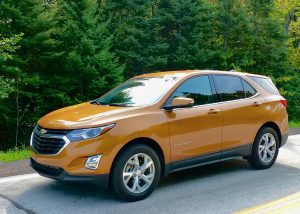
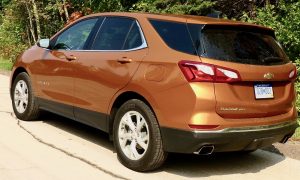
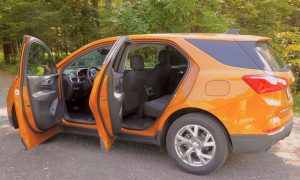
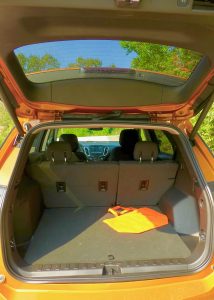
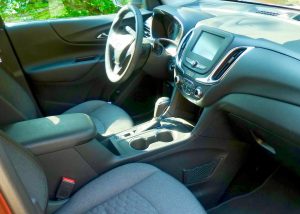
 John Gilbert is a lifetime Minnesotan and career journalist, specializing in cars and sports during and since spending 30 years at the Minneapolis Tribune, now the Star Tribune. More recently, he has continued translating the high-tech world of autos and sharing his passionate insights as a freelance writer/photographer/broadcaster. A member of the prestigious North American Car and Truck of the Year jury since 1993. John can be heard Monday-Friday from 9-11am on 610 KDAL(www.kdal610.com) on the "John Gilbert Show," and writes a column in the Duluth Reader.
John Gilbert is a lifetime Minnesotan and career journalist, specializing in cars and sports during and since spending 30 years at the Minneapolis Tribune, now the Star Tribune. More recently, he has continued translating the high-tech world of autos and sharing his passionate insights as a freelance writer/photographer/broadcaster. A member of the prestigious North American Car and Truck of the Year jury since 1993. John can be heard Monday-Friday from 9-11am on 610 KDAL(www.kdal610.com) on the "John Gilbert Show," and writes a column in the Duluth Reader.